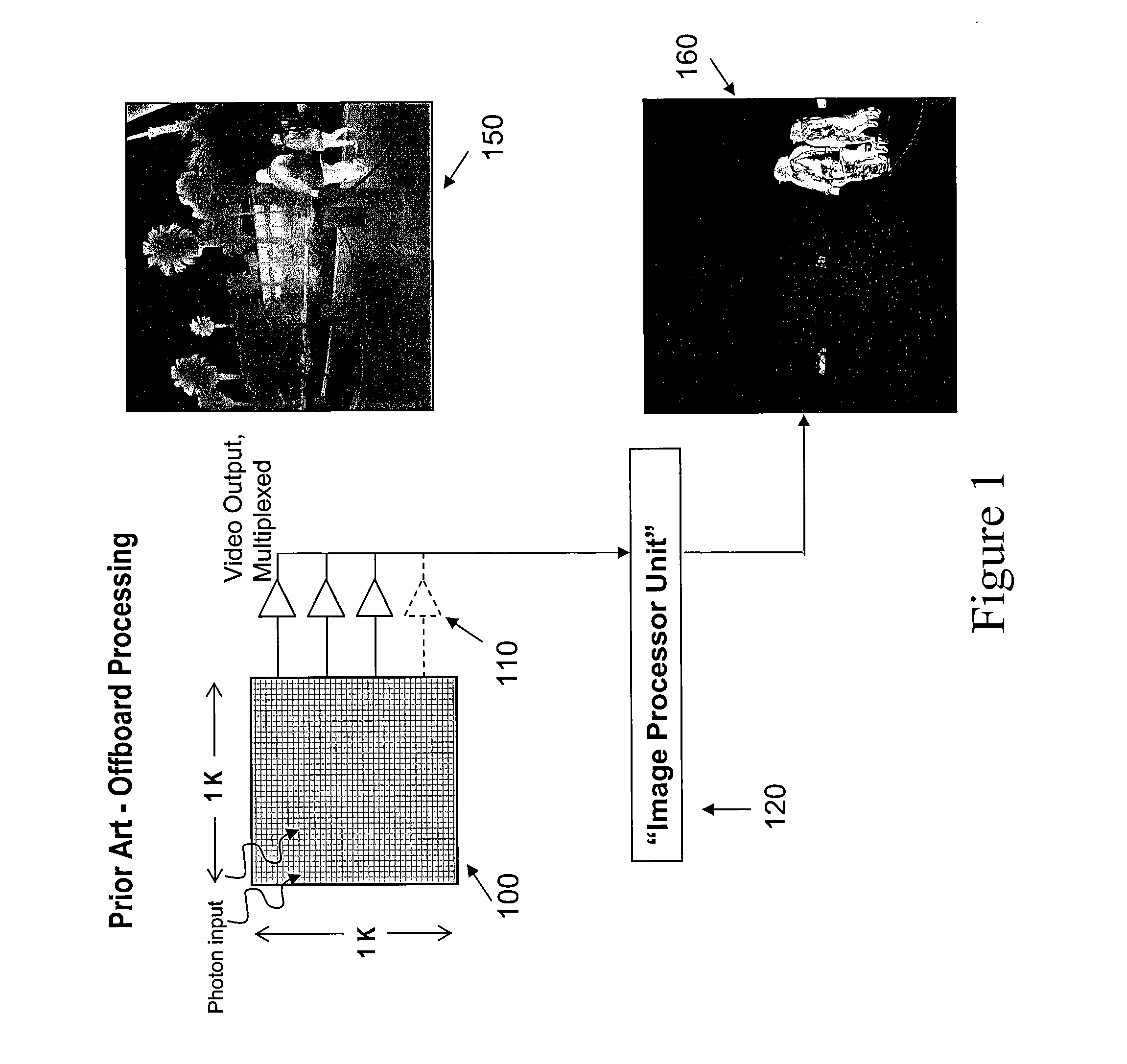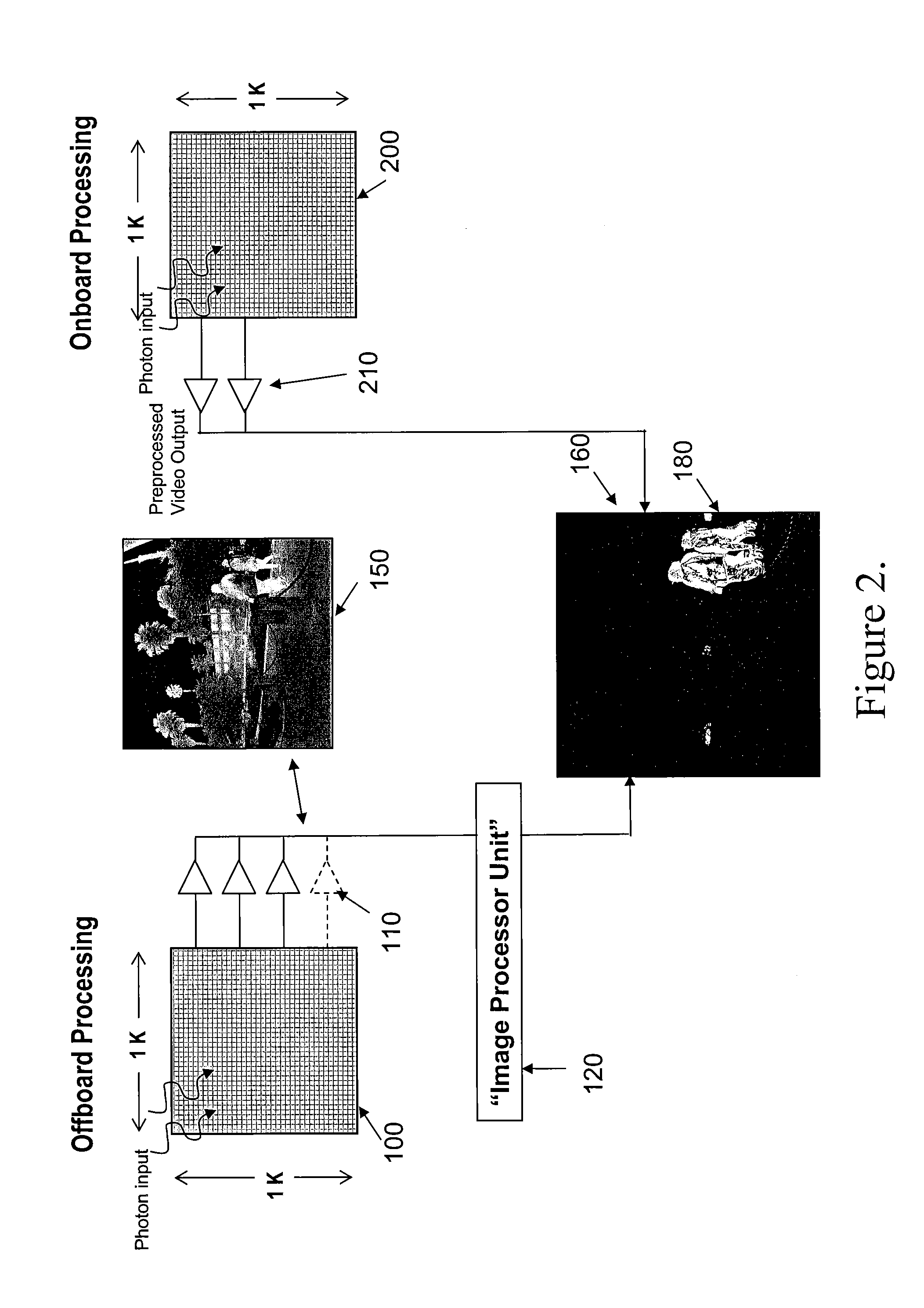Imaging Detecting with Automated Sensing of an Object or Characteristic of that Object
a technology of automatic sensing and object detection, applied in the field of automatic sensing of objects or objects, can solve the problems of background clutter and images of other objects, interfering with the detection of projectiles or characteristics, and limited image processing at the focal plane array of sensors, and achieve the effect of light weigh
- Summary
- Abstract
- Description
- Claims
- Application Information
AI Technical Summary
Benefits of technology
Problems solved by technology
Method used
Image
Examples
Embodiment Construction
[0052]Referring now in more detail and by reference characters to the drawings which illustrate practical embodiments of the present invention, FIG. 1 designates a conventional, commercially available, prior art image processing system. In this case the imaging system in part contains an integrated circuit chip, which is identified by reference numeral 100, and typically has a pixel density of one thousand pixel size or greater in the X-axis and in the Y-axis, with each frame, that is a group of pixels which make-up a full frame at any point in time. There is no target detection and there is no attempt to detect a target object, in the image or even apart from the image.
[0053]The circuit chip which contains the image sensors has outputs directed to an imaging processor 120, as hereinafter described in more detail. It can be observed that the outputs of the chip 100 are introduced through output amplifiers 110 and into the image processing unit 120. An output of the circuit chip itse...
PUM
 Login to View More
Login to View More Abstract
Description
Claims
Application Information
 Login to View More
Login to View More - R&D
- Intellectual Property
- Life Sciences
- Materials
- Tech Scout
- Unparalleled Data Quality
- Higher Quality Content
- 60% Fewer Hallucinations
Browse by: Latest US Patents, China's latest patents, Technical Efficacy Thesaurus, Application Domain, Technology Topic, Popular Technical Reports.
© 2025 PatSnap. All rights reserved.Legal|Privacy policy|Modern Slavery Act Transparency Statement|Sitemap|About US| Contact US: help@patsnap.com



